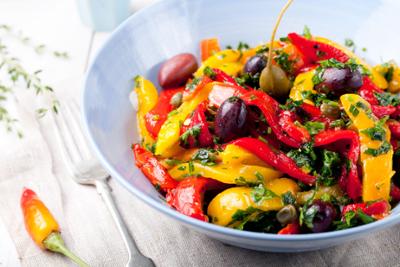

The boom of the V range dishes: taste and restyling win over consumers
The good data on the evolution of the sale of fresh-cut vegetable products in the last year show that the category is beginning to catch on with consumers. Who are the players involved in this business and how does the fruit and vegetable sector gain added value with these latest generation products? What are the new developments and factors that are driving this expansion of the category? Consumer trends are changing and, in addition to the appearance of new references, there is a growing trend to consume 100% vegetable products that are healthy, tasty and easy to eat. One of the latest great successes and with great potential are spreads, which are gradually expanding the category with the appearance of new recipes and flavors. Here are the trends and successful formulas in the convenience food sector.
After several years of slowdown, the convenience food category is in good health. Last year's data reveal an upward trend change in both consumption and product revaluation. Manufacturers and retailers are seeking to meet the new demands of consumers, who are prioritizing their preferences for more convenient, healthy, quality and sustainable food solutions. How can we continue to innovate in dishes that are sometimes so traditional?
Present on the shelves for years, vegetable dishes seem to have awakened the interest of consumers, who, although they are familiar with this category, have managed to break the downward trend of recent years with the sales figures for 2023. According to information gathered by the consulting firm Circana, almost 8,000 t of these products were marketed in 2023, 2.4% more than the previous year, while manufacturers invoiced some 26 M€ for their sale, 7.4% more than in 2022. Made up of cooked products -such as corn, potatoes and beets-, or roasted products -such as peppers and other vegetables-, the proposals of specialist companies have been evolving according to the behavior, priorities and preferences of consumers, who are increasingly looking for healthy, fresh, quality, easy-to-prepare and sustainable food.
The times of consumption are changing and there is a growing interest on the part of buyers when looking for food with which they can have a rich and balanced diet to take care of their health, but without giving up the taste, leisure time and the consumption experience itself. The V range manufacturers have been able to read these interests and, through the restyling of some of their references and the incorporation of new recipes and flavors, are working to continue providing greater added value to the fruit and vegetable sector.
In this category, where nothing seems to change, we are witnessing a great renewal, despite the tradition of some products. Companies such as Surinver, Naturaliment Suquipà or Camporico have widened their range of proposals, going beyond the classic roasted peppers. From the Segovia-based El Campo, Silvia Muñoz, its CEO, points out how the V Range is undergoing an important expansionary cycle. The Surinver cooperative has been able to understand consumer needs and, in addition to expanding its family of dishes with superfoods and the range of culinary solutions, is working on the creation of a range of healthy toppings. Suquipà is also helping in the kitchen with its latest launches, such as the vegetable preparation for croquettes, hamburgers and vegetable meatballs, roasted bell pepper gazpacho, as well as artichoke flower or grilled artichokes... The Sevillian company Camporico has opted for the use of the product through its new gazpacho and salmorejo formats.
Winds in favor, air of change
The fact that the fresh-cut category is in good health is evidenced by the increased demand from national and regional distribution chains, which want to offer these products under their own brand. This is a segment with a lot of growth potential, either because of the greater space given to the category in supermarkets, or because of the popularity of some of its products, such as cooked corn, grated tomato or roasted peppers, which have become staples on the refrigerated vegetable shelf. At Patatas Hijolusa, one of the challenges is “to maintain the presence of our own brands at the point of sale due to the rise of private label distribution, which affects differentiation and market positioning”.
Another product that is starting to become popular is the microwaveable potato, which is beginning to open the way to other tubers such as sweet potato, or to other finished solutions derived from potato, as has been done by Paturpat from Alava or Princesa Amandine.
How can we continue to innovate in such traditional products?
In products as natural and traditional as potatoes, peppers or cooked corn, it seems difficult to be innovative. Beyond offering more sustainable packaging and with a lower percentage of virgin plastic, as consumers are demanding, it is also possible to be innovative in ideas, such as reducing waste. For example, Huercasa from Segovia has launched new formats that reduce waste in the home, while making better use of raw materials at the plant. “New technology and the analysis of market trends are key,” the company explains.
As a result of this analysis and of having detected new consumption moments among younger consumers, we are witnessing a boom in vegetable spreads. With a basic product as demanded as guacamole, companies such as Anecoop, Bonnysa or the Conesa family are betting heavily on new proposals that try to surprise and offer a new way of consuming vegetables from snacking, also on the rise for its idea of sharing. In recent years we have seen how new names have emerged such as brokomole, vegetable sobrasada and lately guisamole, a product that combines avocado with peas.






